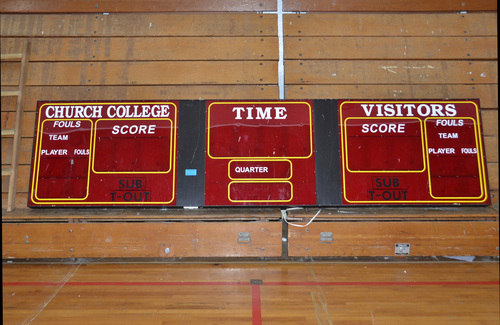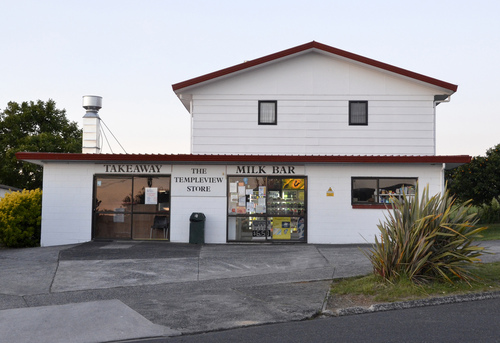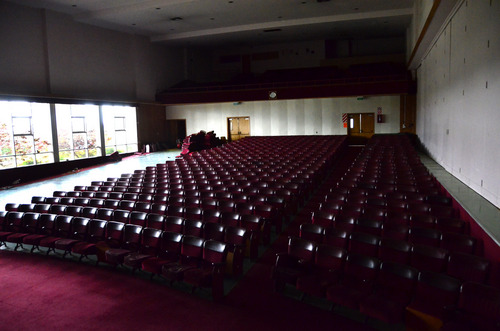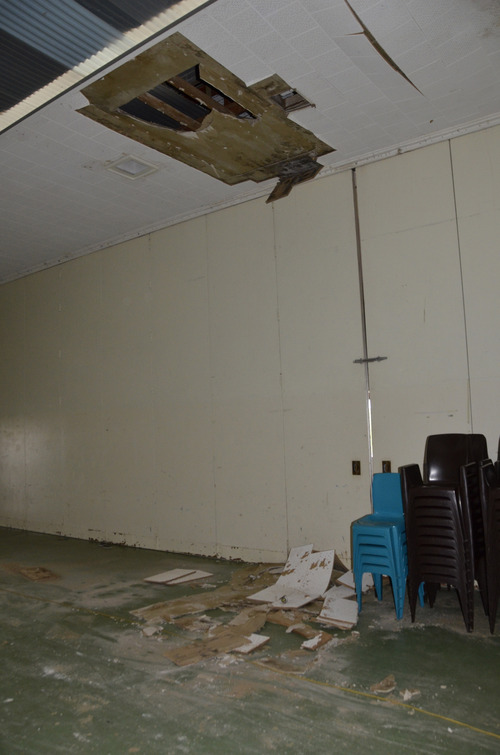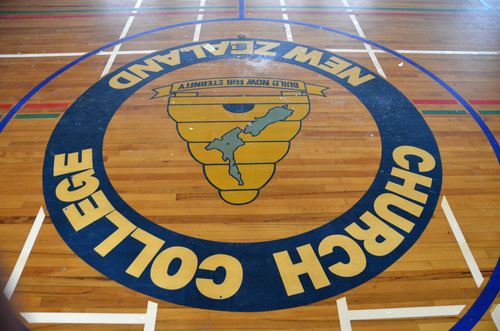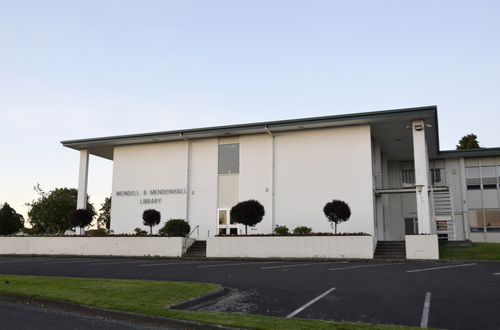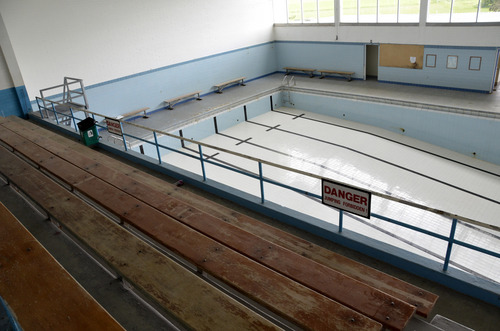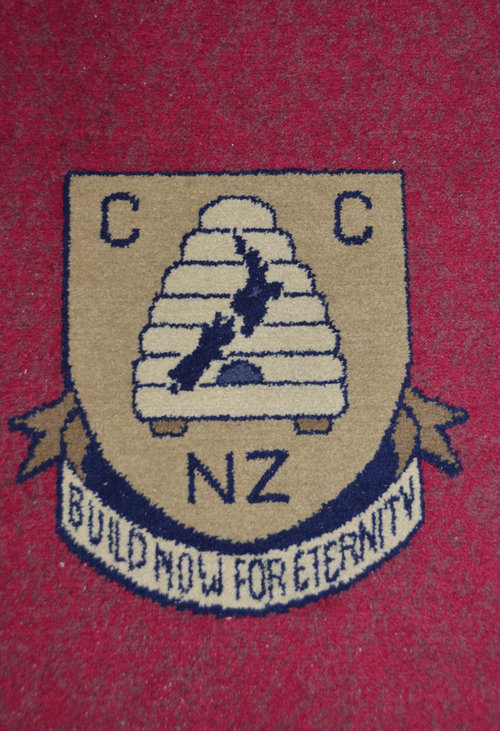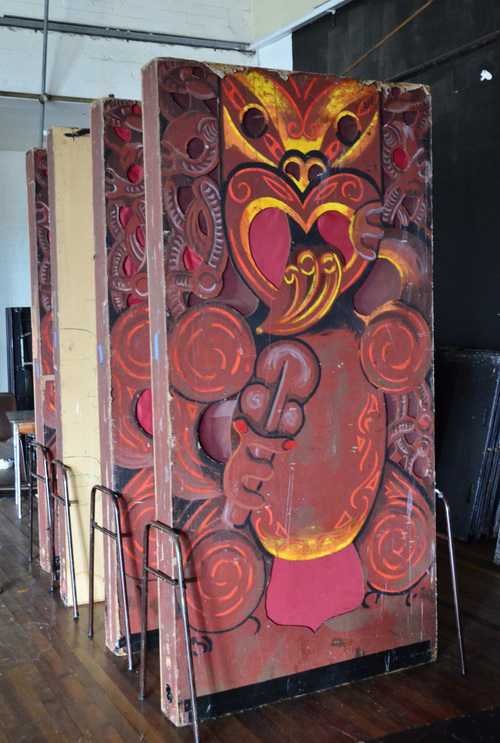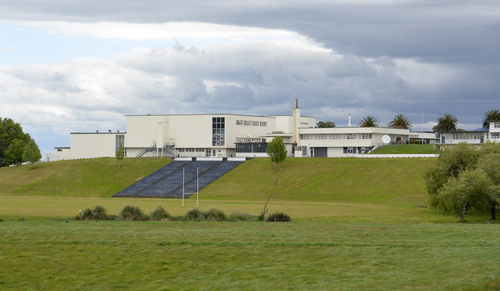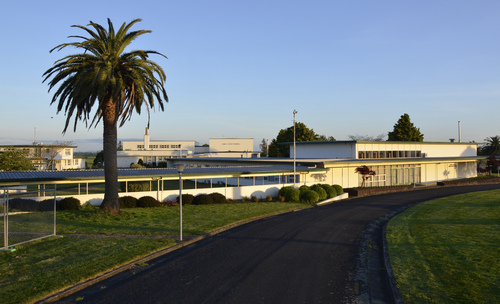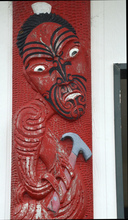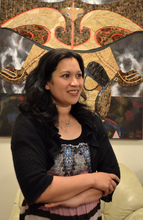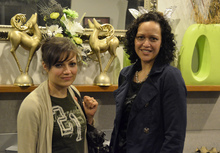This is an archived article that was published on sltrib.com in 2014, and information in the article may be outdated. It is provided only for personal research purposes and may not be reprinted.
Hamilton, New Zealand • If you squint your eyes, you might think you are in a greener, lusher version of 1960s Manti, with the Mormon temple rising out of cow pastures on a hill and clusters of smallish, well-kept homes all around.
This is Temple View, a suburb of Hamilton and a planned community about an hour outside Auckland, where a largely Mormon population has lived for decades, drawn by a common faith, a desire to be near sacred space — and a chance to be educated.
A little ways down from the temple stands the sprawling campus of the LDS Church College of New Zealand, equivalent to an American secondary boarding school, which became one of the premier educational institutions in the country, especially for Maoris.
It, like the temple, was built in the late 1950s by an all-volunteer crew of Maori Mormon workers, known as "labor missionaries," who lived on the site. With each nail and plank, these laborers constructed what they considered a holy place, while at the same time creating a cohesive, self-sacrificing core of devoted Latter-day Saints. They met, married and later sent their children to that very school — and eventually became the nucleus of Mormon leaders in the region.
Together, the temple (the church's first in the Southern Hemisphere), school and homes formed a distinctly Mormon village, much like small Utah towns, where every aspect of social life was entwined with the faith.
"The Temple View precinct has huge historic significance for the country," says Martin Gallagher, a former member of the country's Parliament and currently on the Hamilton City Council. "It represents the incredible story of labor missionaries, which is not just an LDS story but a New Zealand story."
In 2006, officials at LDS Church headquarters in Salt Lake City closed the school, saying it was no longer needed.
The first word was that the campus would be razed, reduced to grazing land. After vehement objections by some local members, many of whose forefathers and mothers had been Mormon pioneers in the region, LDS leaders took a second look.
Now, church officials and designers have spent years crafting a less-drastic plan, which would save at least five of the historic buildings and put them to a new purpose as a "Legacy Park," while enhancing the landscape, upgrading the road, erecting a new LDS stake center for regional meetings, creating a nature preserve and youth camp, and, later, opening a small part of the 1,700-acre parcel for residential and retirement housing.
Mormon leaders saw the school "in a vision," says Hoki Purcell, who, with her husband, Owen, leads the Labor Missionary Society and strongly backs the plan. "It filled a need for our kids to get the best education. Now that mission has ended. We can turn our attention to other needs."
But weighing all the perspectives has been grueling and polarizing.
Preservation versus development is tough under any circumstances, but it has been especially challenging for a hierarchical, centrally controlled faith such as The Church of Jesus Christ of Latter-day Saints to work within New Zealand's democratic system. Church officials are accustomed to members unanimously endorsing their decisions; having to listen to members, outsiders, councils, architects, historians and politicians — often with conflicting views — has been unfamiliar and slow.
"If you don't have vigorous discussion," Gallagher says, "bad decisions can happen."
The debate has pitted Hamilton members and leaders who embrace the church's proposal against those who feel judged as disloyal for opposing — or at least questioning — it.
The larger issues, though, move beyond New Zealand and affect all of Mormonism as the American-born faith attempts to cover the globe: How can it hold on to the best of the past, while propelling into the future? How can it evolve from an all-encompassing social, cultural and religious experience to more of a Sunday-go-to-meeting church without losing its identity?
—
A consecrated history • Within decades of the 1854 arrival of Mormon missionaries in New Zealand, 1,038 of the 1,238 members in the country were Maoris. By 1889, the Book of Mormon was translated into Maori. The church's first school there, the Maori Agricultural College, was built in 1913 and survived until an earthquake destroyed it in 1931.
Several Maori converts had been onetime warriors, and compelling stories of them burying their weapons — following the example of figures in the Book of Mormon — have been handed down in multigenerational LDS families.
By the 1950s, the church had enough members (17,000) to sustain a temple and an adjacent school to educate Mormons who came mostly from rural areas without adequate schools. But money was tight, so the church called for volunteers to join its labor missionary program. For eight years, nearly 400 people, members and nonmembers, young and old, flocked to Hamilton at their own expense to be bricklayers, carpenters, plumbers and electricians on the project. Other New Zealanders who couldn't help physically provided meals, money and clothing.
Single men lived in tents on the site, while married couples with children dwelt in cozy cottages nearby. They hauled "sacred" trees from distant regions to put up classrooms, dorms, an auditorium, gymnasium, cafeteria, student store, an Olympic-size swimming pool, laundry, barbershop, butcher shop and an administration building.
And the temple.
"My father learned the plumbing trade as a 17-year-old labor missionary right out of high school. He served for four years for $1 per week," recalls Ra Puriri, who lives in St. George. "My father met my mother, who worked in the project construction office. I was born in Temple View in 1958."
At the time, New Zealand's educational institutions were dominated by European values, and Maori children could be beaten for speaking their own language, Tereaph Elinora Solomon writes in a 2008 master's thesis about the school. Thus the Church College became a magnet for Maoris seeking an education where their history and culture would be respected.
The government considered the school "one of the top performing schools for Maori and Pacific Island students in the country," Solomon writes. "With a roll of around 700 students annually, the school has also produced many leading achievers for the [LDS] Church."
Classes often were taught by American Mormons, who brought their own sports like basketball and large cars like Buicks to the distant island. Their influence reached far beyond the school's borders. And the LDS values taught at school were reinforced at home. The school's motto: "Build now for eternity."
In the temple's 1958 dedicatory prayer, then-LDS Church President David O. McKay praised "all those who have accepted calls as labor missionaries and literally consecrated their all upon the altar of service."
It is no wonder, then, that the multipurpose David O. McKay Building — where scores of students won swimming trophies, acted in shows and played in basketball tournaments — is at the center of the ongoing struggle. It was the community's heart.
"The McKay Building is significant for Hamilton — the Czech Philharmonic played there, among others," says Gallagher, who is not Mormon. "It would be really sad to see it go."
—
A changing church • The decision to shutter the school was made in Utah by LDS officials, who were steadily getting out of the regional education business. But so was the move to preserve and repurpose some of the buildings.
Church employees, including urban design expert Don A. White, were sent from headquarters to explore options and manage the project. They studied zoning issues that would apply to the church land and huddled with interested parties and experts to hammer out a plan that might appeal to a wide spectrum of Mormons and other residents.
Here's what they came up with: Preserve the Mendenhall Library, which would house an LDS history museum to display artifacts such as Maori memorabilia, a clock from the college's basketball court and yearly alumni awards from the school; the First Teacher House, which would become a day-care center; the George R. Biesinger Building, which would be used for gatherings and funerals; Kai Hall, which would become a reception center; and the Block Plant, where they used to make bricks, would most likely become a recreational/reception facility.
The plan includes demolishing the teacher cottages and student dorms, while erecting a massive new stake center in the style of the old school, building a roundabout on the road beside the school, creating a lake, establishing "Hamon Native Bush" with cabins and a common kitchen for LDS youth groups, and planting 100,000 trees.
"We've had plenty of time to mourn the loss of the school," says LDS Area Seventy Paul Coward. "It's time to move on."
Temple View LDS Stake President John Kendall agrees.
"My kids are going to local schools, and they're doing fine," says Kendall, who oversees a number of Mormon congregations in the area. "It is an opportunity for our kids to be missionaries."
The school closure "hasn't dented the church at all," Owen Purcell, the labor missionary, says. "I have no worries about what's happening at church."
White and other LDS leaders went around the area, spelling out the proposal at informal church settings known as "firesides," typically used for religious instruction.
These leaders noted that the plan was developed under the LDS Presiding Bishopric and implied — and often stated — that it had the approval of LDS Church President Thomas S. Monson.
But when Monson stopped by the school in 2010, audience members heard conflicting messages.
The Mormon leader, considered a "prophet, seer and revelator" in the 15 million-member faith, told the crowd that he believed in "building up, not tearing down," which some members interpreted to mean that the McKay Building and others would escape the wrecking ball.
Others heard no such promise.
—
A question of loyalty • Meiana Nin, who attended Church College and whose parents taught at the school, fears the church's plan is a waste of time and money.
Nin believes in the church prophet's repeating of the folk saying "Use it up, wear it out, make it do or do without."
She lives in Temple View and has seen fellow Mormons — mostly single-income families — who were renting the teacher cottages that line both sides of the road evicted from their homes. The push, she says, has decimated their Mormon ward (congregation).
The plan is for new homes on the site, but they would be more expensive. Other people would move in, but the cohesion would be lost.
"It feels like Americans came in and saw that our community was run-down and said, 'This is not good enough. We need to put some sparkle on it,' " Nin says. "If they had really looked at the people, they would know there is already something special here."
Nin, who plays the piano for the LDS children's organization and also works with teenage girls, still adheres to Mormon fundamentals but believes some ecclesiastical/secular lines have been crossed.
"We are David," says the mother of four young kids, "against Goliath."
Other opponents of the church's plan — all active Mormons — have felt misunderstood and attacked by fellow members.
"Households are split on this," says Jodhi Ponga, a Temple View resident who has challenged parts of the plan . "It has been sold as 'this is what the prophet wants' and people here are taught not to question their leaders. Their direction is seen as straight from God."
Some Mormons in Provo faced similar pressure when they opposed their church's now-abandoned plan to build a nine-story tower to replace three Missionary Training Center classroom buildings, arguing that the high-rise would destroy the character of their neighborhood. An LDS stake president in the area asked the neighbors to back church leaders in their MTC plan, which he labeled an ecclesiastical issue.
"There has been no direction nor desire on the part of the [New Zealand] project team, or as far as I am aware from the general church leadership, to remove temple recommends from individuals," Area Seventy Coward writes in an email, "or to take any other negative action towards those few who have expressed opposing views."
Still, Ponga says her stake president told her bishop — who happened to be her twin brother — to call her in and ask if she "sustained" (supported) local LDS leaders, and whether she had prayed about her actions and position on the plan.
She answered yes to all of the above.
"My worthiness and sustaining of priesthood leaders has never been questioned before," she writes in an email. "And I did shed a tear or two in the bishop's office last week."
The whole experience has not affected these Mormons' devotion to their church, but it has diminished their trust in the church employees.
"The community center touched everyone; the design was meant to be enduring; everything was perfectly set for communal living," says Temple View resident Meshweyla Macdonald. "We have been bullied into agreeing [with the future plan]. I am not going to sit down and have a meal with a church bureaucrat. For me, this is separate from taking the sacrament."
And so the tug of war continues.
Last week, the Hamilton City Council gave the LDS Church the go-ahead for the first phase of its plan, which includes some demolition. On Thursday night, the Temple View Heritage Society, organized to preserve as much of Church College as possible, voted to appeal the council's consent to the Environment Court.
Mormon communities along the Wasatch Front and elsewhere have long since given up many buildings where they once socialized as well as worshipped. Most LDS chapels today are built without theater stages, once a standard meetinghouse feature. Basketball tournaments, drama productions called "road shows" and music festivals have disappeared as the church has moved into a more religious and less social brand of Mormonism.
The Church College of New Zealand and the Temple View hamlet are among the last remnants of that earlier era. It wouldn't matter if no Latter-day Saint wanted those buildings kept, says non-Mormon architectural historian Ann McEwan, they "would still be a significant heritage as a matter of national importance."
Twitter: @religiongal



